
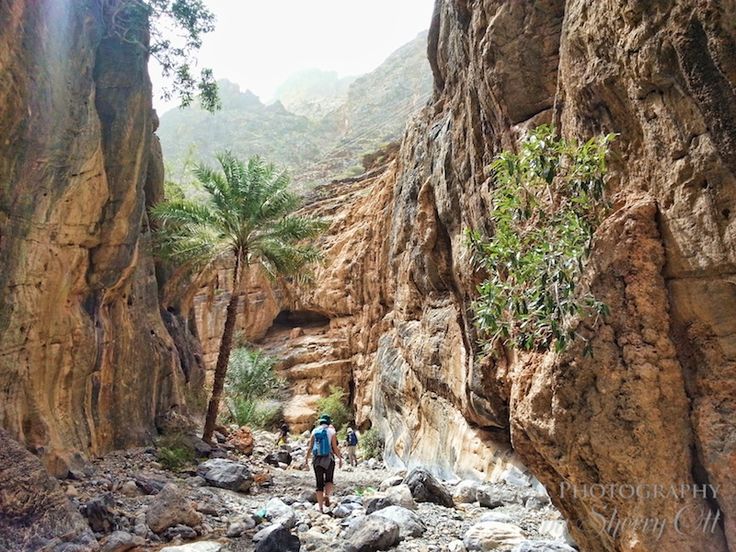
Hiking in Salalah: Hidden Trails Only Locals Know About (Oman Guide)
Most tourists head to popular hiking spots in Salalah during the Khareef season from June to September. We found that there was much more to explore beyond the common trails. The region transforms into a lush paradise during these months and creates some of the most unique hiking conditions throughout the Arabian Peninsula.
Salalah’s terrain features everything from coastal trails to challenging mountain paths like Jebel Samhan. Hikers can spot rare Arabian leopards and gazelles here. The area blends stunning waterfalls with freshwater lakes and famous frankincense trees. Trail options range from easy 1.60-mile walks to demanding mountain ascents.
Our years of learning these hidden paths have given us valuable insights. We’ll share our knowledge of the secret trails that most visitors never see. Let us show you how to experience Salalah’s natural beauty like a local, from secluded springs to pristine mountain routes.
Why Local Trails Beat Tourist Spots
The local paths in Salalah go way beyond the usual tourist trails. They show a completely different side of Dhofar’s majestic landscape that you won’t find in travel guides.
Less crowded hiking experiences
These local trails stand out because of their peaceful solitude. You can enjoy nature’s symphony without the usual tourist buzz. The paths lead to hidden waterfalls and private pools where you can soak in pure tranquility.
These local paths are special because:
- You’ll spot wild camels and local birds in their natural habitat
- There are quiet spots perfect for peaceful breaks
- You can walk at your own pace without tourist crowds
Authentic cultural encounters
The paths weave through charming Dhofari villages where you’ll connect with local culture. They’re not just about the views – they open doors to genuine Omani hospitality. You can watch traditional frankincense harvesting up close as you walk these routes.
Magic happens on these trails. You might bump into local shepherds on mountain paths or fishermen along the coast. These chance meetings teach you about daily Dhofari life in ways tourist trails never could. The paths pass through old frankincense farms where locals love sharing stories about their precious resource’s history.
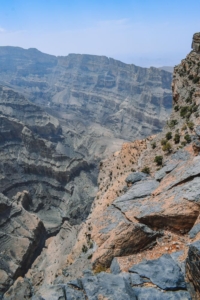
Untouched natural beauty
Local trails showcase Salalah’s raw beauty in its purest form. You’ll find yourself among untouched frankincense groves and pristine wadis that most visitors never see. These paths reveal Dhofar’s wild side, perfect for explorers who love to wander.
Local weather knowledge is vital to find these hidden spots. Each season brings something new – from misty mountain paths during khareef to clear coastal views in winter. The mountains around these paths give you amazing views of the scenery below. You can see Salalah’s natural landscape stretch out as far as the eye can see.
You won’t find these routes on tourist maps. They lead to hidden caves and ancient rock formations that feel untouched by time. These paths keep their authentic character alive, showing how this region has stayed true to its roots through centuries.
Hidden Waterfall Trails
Salalah’s mountain ranges hide some of the most spectacular waterfalls. Each waterfall tells its story through ancient rock formations and crystal-clear waters.
Secret cascade near Tawi Atair
Tawi Atair, known locally as the “Well of Birds,” stands as one of nature’s most breathtaking displays. A remarkable waterfall drops from towering cliffs into a deep, turquoise pool. The site is a chance to step back in time with ancient ruins and cave paintings scattered across the surrounding area.
The path to Tawi Atair weaves through rugged terrain. You’ll see geological wonders and cultural heritage along the way. Several viewing platforms give you spectacular views of the thundering cascades. The falls create a mesmerizing sight, especially when the khareef season brings peak water flow.
- What makes Tawi Atair special:
-
- Ancient ruins and historical artifacts
-
- Natural sinkhole formation
-
- Cave paintings from earlier civilizations
-
- Dramatic cliff-side viewing spots
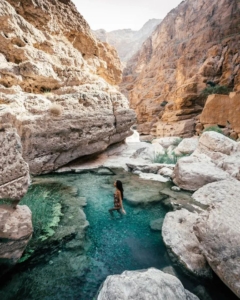
Local spring paths in Jabal Al Qamar
Jabal Al Qamar (Moon Mountain) slopes hide several springs that create their own micro-ecosystems. Ayn Sahalnoot is a hidden gem that few visitors ever find. Getting to these springs means following winding mountain paths. The trek itself becomes an adventure.
Nature shows its artistry in this area. Water emerges from limestone formations and creates small, pristine pools. These waters flow through narrow channels and form many mini-waterfalls. The surrounding terrain lets you explore freely. People who want solitude in nature come here most often.
Safety should be your priority at these water features. Bring your own water instead of drinking from the springs. The area’s unique rock formations create natural shade spots. These spots are perfect rest areas during longer hikes.
These hidden waterfall trails are among Salalah’s most precious natural treasures. They give you more than just beautiful views. Each spot blends natural beauty with history. This creates unforgettable hiking adventures if you’re ready to step off the beaten path.
Local Mountain Paths
The rugged mountains of Eastern Dhofar hide secrets that most guidebooks never mention. Ancient paths cut through these peaks tell stories of shepherds, traders, and explorers who shaped Salalah’s fascinating history.
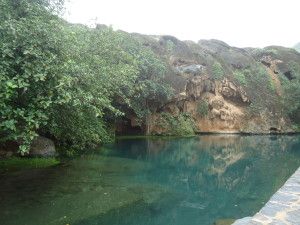
Shepherd trails in Eastern Dhofar
Jabal Samhan towers as the crown jewel of Eastern Dhofar’s mountain range. Local shepherds have managed to keep their traditional routes alive for generations. These paths serve as livestock routes and reward hikers with breathtaking views of the Dhofar landscape. Lucky travelers might catch glimpses of Arabian leopards, hyenas, and other native species that roam these mountains.
Ancient Frankincense routes
Salalah’s mountainous terrain cradles historical frankincense trails that link ancient trading posts once buzzing with life. A network of paths stretches over 2,000 miles and connects distant lands where this precious resin traveled.
Key features of these historic routes include:
- Ancient rest stops near Wadi Ghudun
- Traditional harvest areas in Thumrait
- Storage caves tucked into cliff faces
Yes, it is more than just a hiking experience – these paths are living museums of Oman’s trading heritage. Travelers can walk past frankincense trees where local collectors still practice their age-old harvesting techniques.
Hidden caves and rock formations
Salalah’s mountains shelter many unexplored caverns beyond the prominent tourist caves. Al Marneef Cave stands out with its geological wonders and sweeping views of the Arabian Sea. The area’s unique karst topography creates a vast network of caves, each with distinct features.
These mountain cave systems showcase remarkable stalactites and stalagmites that nature crafted over millions of years. Each underground chamber acts as a natural time capsule of the region’s geological past. Khadr Afrar Cave sits nestled near the mountain trails and displays intricate rock formations that provided shelter through generations.
Mountain paths lead to Salalah’s hidden treasures, from ancient trade routes to geological wonders. Their historical value and natural beauty make these trails perfect for adventurers who want authentic experiences away from tourist hotspots.
Secret Coastal Hiking Routes
Salalah’s coastline hides some of Oman’s most breathtaking trails. Dramatic cliffs meet the Arabian Sea to create a raw display of natural beauty.
Hidden coves beyond Mughsail
A network of secret paths exists just past the popular Mughsail Beach. These paths guide you to pristine coves that few people find. Masood Hidden Beach stands out as a prime example. This secluded paradise sits between towering mountains about 5 kilometers from Mughsail. White sand surrounds the small beach with dramatic cliffs on all sides.
You need careful planning to reach these hidden spots. Shaat Beach, another hidden gem, needs a 4×4 vehicle and a local guide works best. Challenging terrain acts as a natural gateway that keeps these locations pristine.
Key features of these hidden coastal trails include:
- Natural limestone formations and caves
- Pristine white sand beaches
- Dramatic cliff-side viewpoints
- Crystal-clear swimming spots
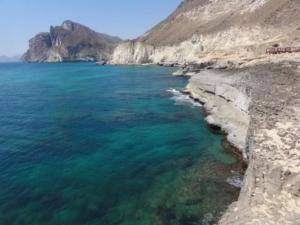
Fishermen’s paths along cliffs
Ancient routes used by local fishermen provide exceptional views of the Arabian Sea. Trails near Mirbat Fishermen’s Marina show the region’s rich maritime heritage. These paths wind along rugged cliffs where you can watch local fishing practices and marine life.
Taqah Cliff area offers paths with different difficulty levels that suit various hiking abilities. You’ll find secluded spots where local fishermen still use traditional fishing methods. These spots create perfect moments to experience cultural exchange and photography.
The coastal trails shine during the khareef season. Fog and mist can limit visibility. Notwithstanding that, misty conditions create an ethereal atmosphere that turns familiar landscapes mysterious. Clear skies outside monsoon season provide perfect conditions to explore these coastal paths. You can spot marine life and seabirds easily then.
The Marneef Cave area overlooks these hidden coves. This spot helps you understand the coastline’s geography. Hikers can watch the famous blowholes shoot seawater up to 28 meters high. The limestone formations along these paths tell stories of geological processes that span millions of years.
Best Times for Hidden Trail Hikes
The perfect time to hit Salalah’s trails can make your hike either a tough challenge or an amazing adventure. My experience shows that picking the right time isn’t just about dodging crowds – you need to understand how the weather works here.
Local weather wisdom
The Khareef season reshapes the scene in Salalah from June through September. Temperatures stay between 77°F (25°C) and 86°F (30°C). This monsoon wraps the area in mist and turns everything green. You might find it hard to take photos or navigate trails because the visibility isn’t great.
Beyond Khareef, temperatures swing from 68°F (20°C) in cooler months to 95°F (35°C) in peak dry season. Early morning hikes are a must during hot weather. The best hiking conditions show up right after Khareef, from late September to early December, with dry paths and plenty of greenery still around.
Seasonal trail access tips
Each season brings its own hiking adventures:
Khareef Season (June-September)
- Trails get slippery and muddy
- Waterfalls flow at their strongest
- High tides make coastal paths dangerous
Post-Khareef (October-December)
- Clear skies are perfect for photos
- Temperatures are just right for hiking
- Green surroundings stay beautiful
Winter Months (January-March)
- Mild temperatures rule
- Long-distance hikes work best
- Mountain trails offer clear views
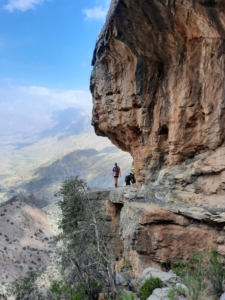
Monthly hiking calendar
| Month | Trail Conditions | Recommended Activities |
| June | Start of monsoon, increasing humidity | Early morning mountain hikes |
| July-August | Peak greenery, frequent rainfall | Waterfall trails, forest walks |
| September | Transitional weather, decreasing rain | All trails available |
| October-December | Pleasant temperatures, clear skies | Extended hikes, coastal trails |
| January-March | Cool mornings, warm afternoons | Mountain ascents, desert trails |
| April-May | Increasing heat | Short early morning hikes |
Safety matters a lot whatever the season. I always pack enough water, wear the right gear for the weather, and plan routes that let me finish before sunset. Starting hikes early helps you beat the midday heat and gives you better chances to spot wildlife.
Photographers will notice that light changes a lot with seasons. Khareef’s mist creates dreamy landscapes but makes it tough to see far, while winter gives you crystal-clear views of Salalah’s dramatic scenery.
Conclusion
Salalah’s hidden trails are evidence of the region’s rich heritage and natural beauty. My exploration of these secret paths helped me find that each trail has its own story – from ancient frankincense routes to hidden coastal treasures.
These paths give you more than scenic walks. Local trails connect adventurous hikers to pristine waterfalls, untouched beaches, and mountain views. They also create genuine encounters with Dhofari culture. Travelers who choose these hidden routes instead of tourist hotspots get peaceful solitude and authentic experiences.
The right timing and preparation determine your success on Salalah’s hidden trails. The Khareef season reshapes the scene completely, yet each period offers its own charm and hiking possibilities. Local weather knowledge and proper planning turn these lesser-known paths into gateways for adventures that most visitors miss. Book Now!
